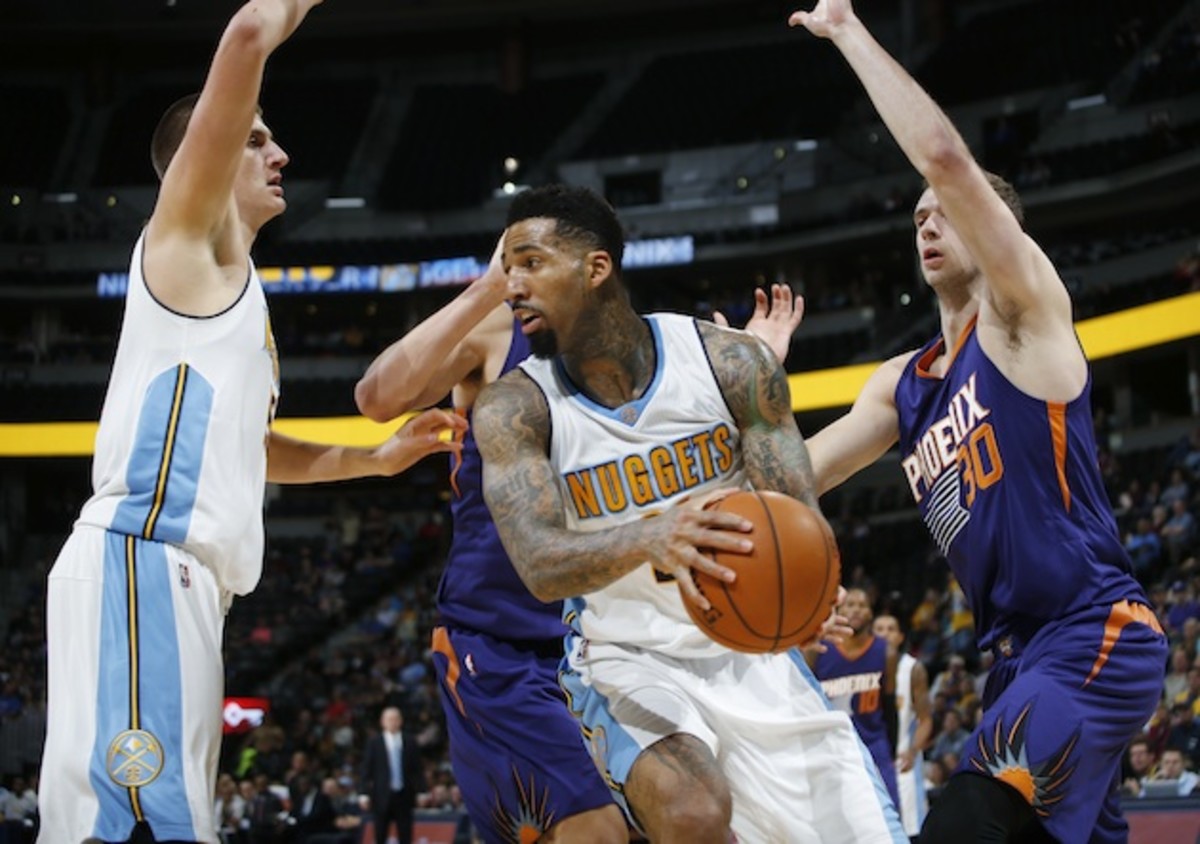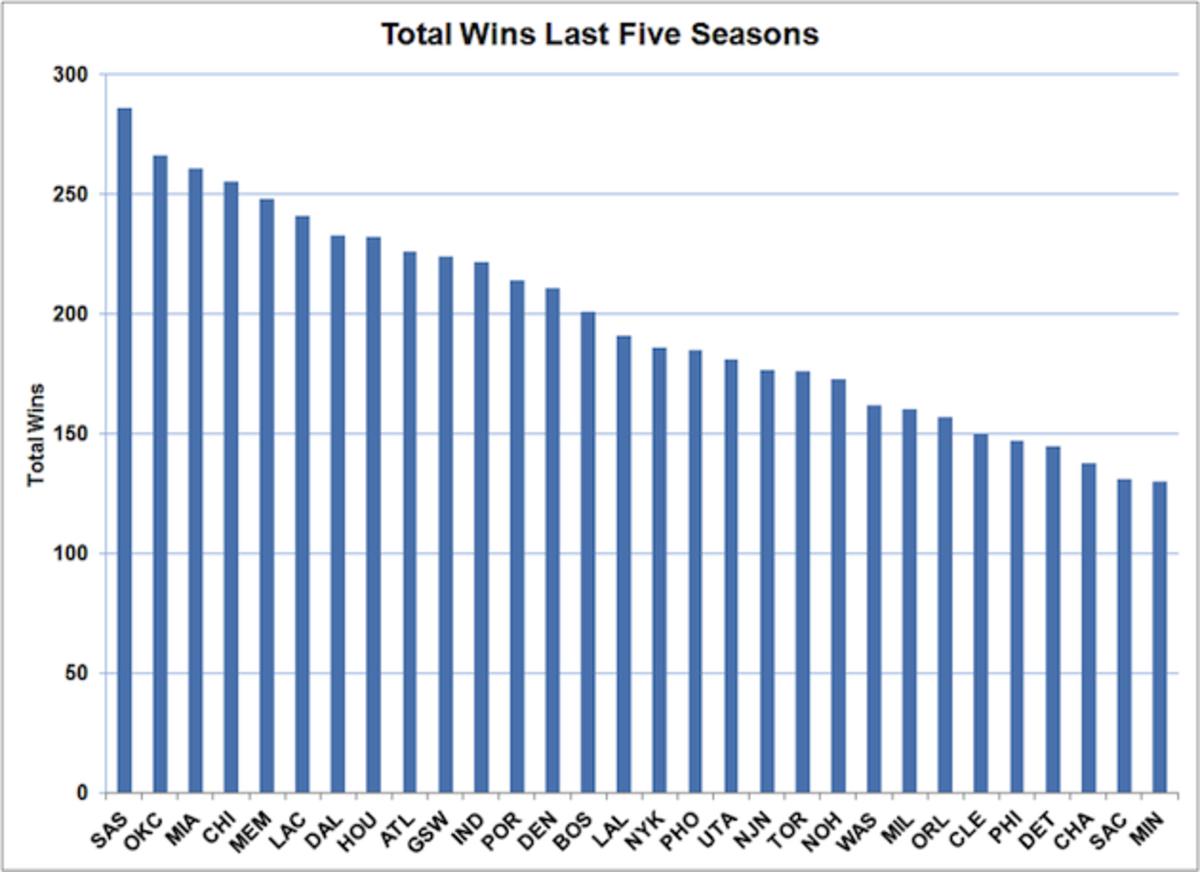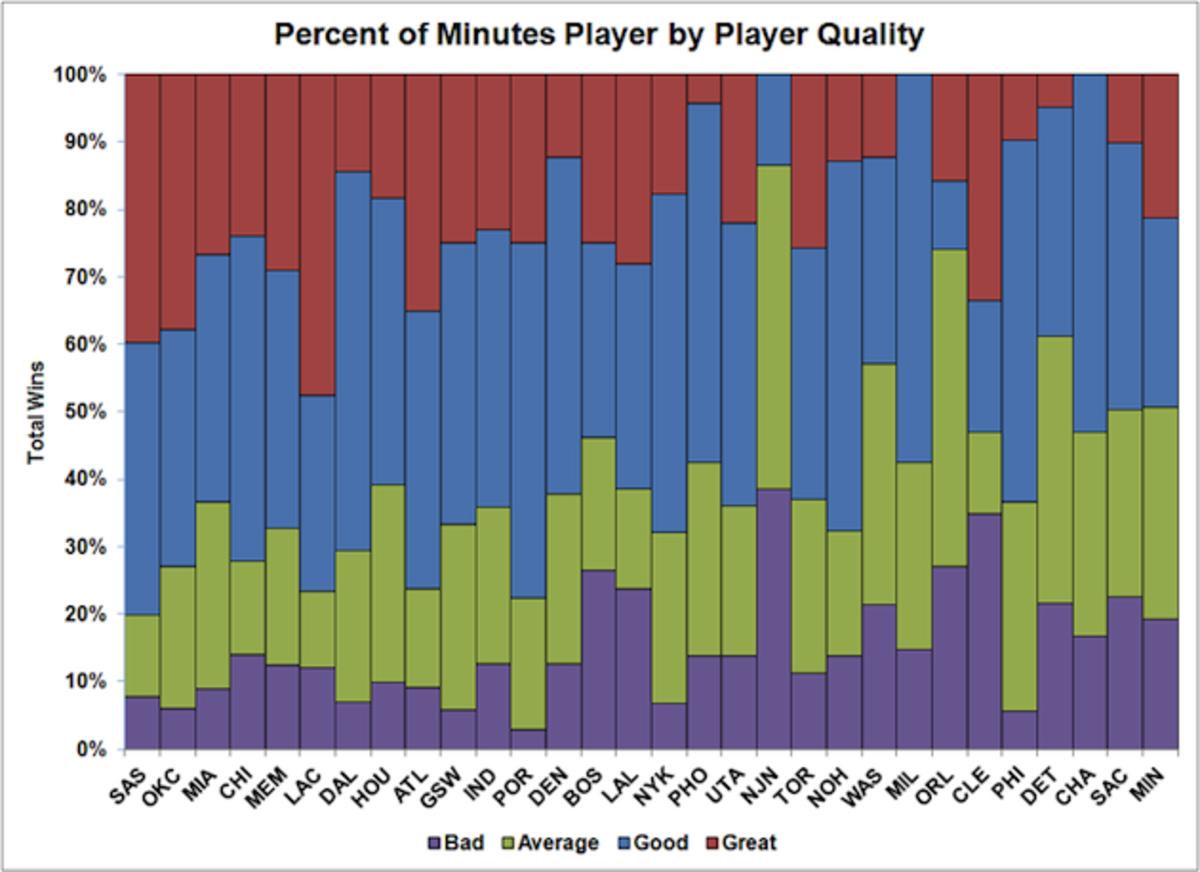NBA's Power of Average: How teams can improve without chasing stars

Over the past few weeks, media outlets have been releasing their NBA win projections. And while such prognostications are bound to incite quips and qualms aplenty, no team’s forecast has been met with as much surprise as that of the Boston Celtics.
The Westgate Las Vegas Superbook, for instance, initially set the Celtics’ over-under at a fairly conservative 42.5 wins. Meanwhile, FiveThirtyEight’s new CARMELO projection system had Boston at 48. Andrew Johnson of Nylon Calculus — who boasted some of the most accurate win projections last season — pegged them at 49, the third-best record in the Eastern Conference.
Crazy, right? How could a team whose best player is a 5'8" shoot-first point guard (and whose two biggest off-season additions were David Lee and Amir Johnson) possibly be touted so highly? By all accounts, Boston was lucky to tally 40 wins a season ago, and the Eastern Conference has only improved since then.
• MORE: Scouts offer their takes on all 30 teams
The Celtics sure don’t look like much on paper, but few teams are in a better position to more fully leverage what they have.
Behold the power of average.
*****

No one wants to be mediocre. Particularly in basketball, where being mediocre is more often an inescapable fate than a stepping stone ahead. The nature of the league’s talent distribution dictates that some teams will be good and some will be bad, with most existing in the meh-middle between. In practical terms, an average player's positives and weaknesses cancel out.
Speaking more specifically, average can be reasonably defined using a metric like Box Plus-Minus — a box score derived estimate of a player’s net impact per 100 possessions. The stat is scaled such that 0.0 represents a baseline average. Looking at players from last season who finished with a Box Plus-Minus between -0.5 and +0.5 help illustrate the concept: These are your Andre Robersons and Wilson Chandlers; your Rodney Stuckeys and Miles Plumlees. They are shooters and defenders, rebounders and distributors. More importantly, they’re all both skilled and flawed in roughly equal measure.
Which former lottery teams could make the NBA playoffs this year?
At a team level, however, average can mean death. The expression “treadmill of mediocrity” is instructive here — a reference to the difficulties inherent in climbing from the middling quagmire. But while the perceptionof average is slightly more negative than its mathematical definition, it’s also a potentially exploitable advantage. Most teams are built with a mix of good and bad players. The great players are exceedingly difficult to find, but players who exist within the middle tiers — the serviceable majority — are much more common. As such, there’s great power to be had in a team’s ability to replace their bad players with average ones.
This helps explain why projections for the Boston Celtics have been so rosy. For example, FiveThirtyEight’s win estimates are based on player projections (a 50/50 blend of Box Plus-Minus and ESPN’s Real Plus-Minus). By their estimates, Marcus Smart stands to be the Celtics' best player this season, worth about 2.8 points per 100 possessions. That’s just below the level of what most plus-minus practitioners would consider a star.
The reason the starless Celtics are projected to win 48 games is because nine of their other 14 players have a projected value of -0.5 or better. That essentially means Boston can build an entire rotation of average-to-above-average players. A completely average team would project to win about half their games over the course of a season. If you throw in the few slightly better-than-average players Boston boasts— Smart, Johnson, Lee, Isaiah Thomas, Kelly Olynyk —tacking on six or seven extra wins suddenly doesn’t sound so farfetched.
Looking at recent history, where the Celtics are trending is somewhat similar to where the Houston Rockets and Dallas Mavericks once were. Over the past five seasons, these two Western stalwarts amassed the seventh- and eighth-most wins in the league, respectively. Each has consistently been in the league’s top-tier for the past half-decade, lurking right outside championship contention in the high-wire realm where one lucky break or windfall roster addition could have theoretically pushed them over the top.

However, if we compare their distribution of minutes by player quality, we see Dallas and Houston haven’t had nearly as much star power as some of their conference peers.

I’m defining each level of performance here by Box Plus-Minus, using +3.0 as the marker for a great player. Anything between that and +0.5 is considered good. From +0.5 to -0.5 is average. All other performances below that are defined as bad.
Looking at the chart, what the best teams share in common is not so much the quantity of great players as the absence of bad ones. A mix of average and good, then, can make up for a shortage of star power, so long as the bottom half of the roster isn’t logging too many minutes.
Of the 14 teams with at least 200 wins over the past five years, the Rockets, Mavericks, and Nuggets are the only ones who had fewer than 20% of their minutes going to “great” players. The Mavs and Rockets registered the first- and third-highest percentage of minutes played by players who fell into the average and good categories (78% and 72%, respectively). If the Celtics adhere to the rough minutes allotment projected in the FiveThirtyEight preview, 84% of their minutes will be going to players who fall into those categories.
NBA's growing middle class will force teams to pull off tricky balancing act
There’s always a risk of hyperbole when dealing with projections and hypotheticals, of course. Still, the underlying math is pretty simple. The star-driven nature of today’s NBA has shifted the emphasis to the roster’s top, but improvements can happen at any of a team’s 15 roster spots. For example, all things being even, a team could gain just as much by moving an equal block of minutes from Wesley Johnson (-1.5 BPM) to Courtney Lee (+0.5 BPM) as they could moving an equal number of minutes from Rudy Gay (+2.1 BPM) to Blake Griffin (+4.1 BPM).
Needless to say, finding a Courtney Lee is a lot easier than finding a Blake Griffin.
Obviously, the Celtics would’ve preferred to to enter this season with a top-tier star or two. But as Plan Bs go, shedding negative players in favor of accessibly average ones can give a team plenty of juice. Boston won’t be competing for a championship any time soon, but don’t let the “meh” quality of their roster belie how competitive they’ll really be. Chasing average is not just a compensation strategy either; it’s essentially the same template the Los Angeles Clippers have followed in an effort to rebuild their much-maligned bench.
Every team wants to hit a personnel home run — to build their roster around a household star and a handful of upper-echelon role players. But shedding end-of-bench dead weight in favor of slight, cross-the-board upgrades can pay enormous dividends as well. You just have to know where to find them.

